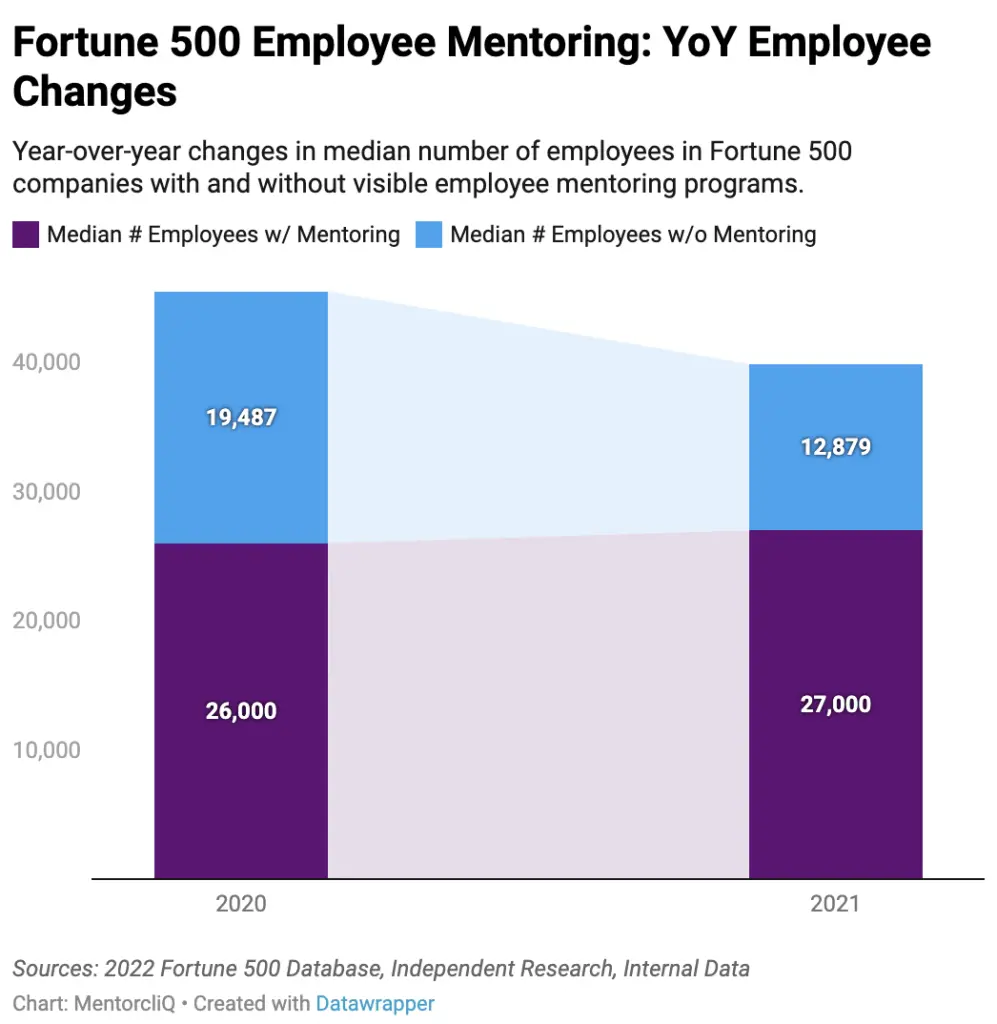Earlier, my colleague Adrienne Holtzlander wrote an excellent and personal post on why and how organizations should support neurodiversity in the workplace. While that post is focused on a subset of employees, HR leaders should note that nearly every employee will need help finding satisfaction and enjoyment at work at any given time. It’s not only the pay or the perks that boost job satisfaction. All employees need a deep sense of purpose and well-being. This is where occupational wellness comes into play.
What Is Occupational Wellness?
Occupational wellness refers to the contentment, satisfaction, and overall well-being workers feel in their professional role. It revolves around deriving meaning from one’s work and feeling valued for their contributions.
Meaning is significant for most workers, especially in our post-COVID years. The pandemic epiphanies of the 2020s led to workers increasingly adopting what’s known as the “passion principle.” The best way to define this concept comes from Richard Nelson Bolles’ book, “What Color Is Your Parachute?“:
“Thinking about a new career … should speak to your heart. It should say something like this: Use this opportunity. Make this not only a hunt for a job, but a hunt for a life. A deeper life, a victorious life, a life you’re prouder of. The world currently is filled with workers whose weeklong cry is, “When is the weekend going to be here?” … Their work puts bread on the table but … they are bored out of their minds…. The world doesn’t need any more bored workers. Dream a little. Dream a lot. One of the saddest pieces of advice in the world is, “Oh come now—be realistic.” The best parts of this world were not fashioned by those who were “realistic.”
Consequently, more workers in the US are satisfied with their jobs than ever. The Conference Board found that over 62% of US workers reported being satisfied with their work. Job satisfaction has steadily risen since hitting a low point during the Great Resignation, while the years between 2020 and 2023 have seen that rate increase at a higher pace.
Where are the biggest gains in job satisfaction, according to the survey?
- Work-life balance
- Workload
- Performance Reviews
- Health plans
- Bonus plans

For employees to feel like occupational wellness is working for them, their companies need to focus on reducing workloads, reducing stress around performance reviews, and boosting benefits and pay.
The Great Resignation certainly had much to do with that. And, the fact that companies with better employee engagement and development programs, like mentorship, retained employees better during the Great Resignation is a testament to the impact that supporting employee wellness has on a company’s ability to keep job satisfaction high.
Yet achieving occupational wellness isn’t just about job satisfaction. It encompasses several factors:
- Opportunities for personal growth and career advancement
- A healthy balance between work and personal life
- Building and maintaining positive relationships within the workplace
- Working in a safe and supportive environment
- Developing skills to manage work-related stress effectively
Those with a strong sense of occupational wellness tend to be more productive and creative in their roles. They not only perform better but also have a reduced risk of experiencing burnout. This sense of wellness benefits the individual and is pivotal for the organization’s overall success. When employees are well and fulfilled, the entire organization thrives.
Exlore more avenues that build workplace wellness:
Occupational Wellness Is the Key to Employee Well-Being
Occupational wellness is a cornerstone of overall employee well-being, acting as a bridge between professional satisfaction and a balanced life.
When employees are in a state of occupational wellness, their engagement and motivation soar. They become resilient, adapting to challenges with enthusiasm. A workplace that champions skill development, offers growth avenues and maintains a genuine work-life balance can significantly mitigate stress and elevate job contentment.
The rewards? A surge in productivity, innovation, and teamwork that not only uplift the individual but also propels the organization forward.
On the flip side, overlooking occupational wellness can be costly. It can pave the way for burnout, dwindling job satisfaction, and deteriorating mental health. The key is to strike a balance: tasks should be challenging enough to inspire but not so overwhelming that they lead to fatigue.
A culture that values open communication, supportive leadership, and continuous learning is a fertile ground for well-being in the workplace.
A commitment to occupational wellness is a commitment to a thriving workforce. The dividends include boosted morale, reduced attrition, and amplified organizational achievements. By advocating occupational wellness, employers not only uplift their teams but also cast a positive influence on their personal lives and the wider community.
10 Ways to Promote Occupational Wellness at Work
In its 2023 Employee Benefits Survey, SHRM found that only 49% of employers believed that wellness benefits were “important” or “extremely important.” While it’s hard for companies to properly prioritize the benefits they offer employers, placing wellness that low on the list could be detrimental.
HR leaders looking for a few ideas for how to enhance their occupational wellness approach may benefit from the following ideas.
1. Promote work-life balance
Work-life balance is the equilibrium between professional responsibilities and personal life activities, such as family, leisure, and self-care. A healthy work-life balance ensures that employees are not overwhelmed by their job demands at the expense of their personal well-being.

It is no surprise that workload is the most-cited cause of workplace stress (41%, according to ComPsych).
A heavy workload often leads employees to work beyond their regular hours, affecting their ability to balance work with other aspects of their lives.
It’s essential for employees to have a balance between their professional and personal lives. Your company can achieve this by offering flexible working hours, remote or hybrid working options, and ensuring employees aren’t overburdened with tasks.
Netflix is an excellent example of a company that provides excellent work-life balance. It doesn’t prescribe 9-5 working hours, so employees can work when they can while fitting in all their personal commitments. Netflix also offers unlimited vacation days, rather than having traditional, limited holiday time, with the motto “If you need a vacation, take a vacation.“
2. Encourage autonomy and decision-making
When employees feel they have control over their tasks and decisions, they are more likely to be engaged, motivated, and satisfied with their roles. This empowerment reduces feelings of helplessness and burnout, as individuals can align their work with their personal values and strengths.
Moreover, autonomy at work promotes creativity and innovation, allowing employees to find solutions that best fit their unique perspectives. This way, not only does a workplace enhance individual well-being, but it also benefits from increased productivity and a more positive organizational culture.
For example, Google’s 20% Project allowed engineers to spend 20% of their working hours on projects they were passionate about, even if those projects weren’t directly related to their primary job responsibilities. This autonomous environment led to the birth of some of Google’s most innovative products, including Gmail, Google News, and AdSense.
By giving employees the freedom to pursue their own ideas, Google fostered creativity and innovation and demonstrated trust in its workforce.
3. Provide learning and development opportunities
Growth is a fundamental human need. Gaining new skills can make employees feel closer and more connected to their jobs. Employees now want more than just new certificates they can show off on LinkedIn; they also want professional development, personal development, and career pathing.

By offering training sessions, workshops, and courses, employers can ensure that their employees feel valued and are given the chance to grow both personally and professionally, resulting in enhanced occupational wellness.
In addition to skills development through in-person training sessions and online learning platforms (such as LinkedIn Learning or Coursera), mentorship plays a pivotal role in today’s modern workforce.
While training programs might provide the foundational knowledge and skills required for a job, mentorship can help individuals apply this knowledge in practical situations. Mentoring relationships help employees navigate organizational dynamics and develop soft skills like communication, leadership, and problem-solving.
Moreover, mentorship is typically a two-way street. While the mentee benefits from the mentor’s experience and guidance, the mentor can also gain fresh perspectives, insights, and a sense of fulfillment from helping someone grow. This dynamic relationship can foster a culture of continuous learning within an organization, making mentorship an integral part of L&D opportunities.
Give yourself a bit of occupational wellness. Mentoring software will reduce your own stress as an HR leader or admin by eliminating the workload. Check it out with a demo.
4. Build positive relationships at work
Positive workplace relationships are foundational to a holistic and fulfilling professional experience. When employees foster strong bonds with their coworkers, they often experience increased job satisfaction, reduced stress, and a heightened sense of belonging.
These relationships create a supportive environment where individuals feel valued and understood, promoting open communication and collaboration. This positive atmosphere boosts morale and encourages a culture of mutual respect and trust. This way, employees are more motivated, engaged, and committed to their roles, leading to better overall performance and well-being.
5. Make mental health a priority
More than 1 in 5 US adults live with mental illness. The stigma around mental health issues is slowly changing but persists to an alarming degree. This is where employers can step in and offer support for enhancing occupational wellness.

When employers recognize and address mental well-being, it fosters a work environment where employees feel understood and supported. Such an environment reduces burnout, anxiety, and absenteeism while increasing productivity and creativity.
Employees who feel secure in their mental well-being are more motivated and engaged in their roles.
A focus on mental health promotes open dialogue, reducing stigma and encouraging individuals to seek help when needed.
A perfect example of this is American Airlines’ Employee Assistance Program (EAP), offering free in-person or phone counseling for all employees and members of their households whenever they need support with their mental health during all of life’s changes and challenges.
By prioritizing mental health, businesses cultivate a resilient, satisfied, and high-performing workforce, ensuring individual and organizational success.
6. Don’t forget physical health
Physical health plays a pivotal role in our overall mental well-being. And there’s a strong connection between physical health and mental health. Multiple studies show exercise like walking and running can positively impact individuals suffering from depression.
Recognizing this, employers should incorporate physical activity into their employee well-being initiatives. This can be achieved through various means, including workplace wellness programs, fitness challenges, or even offering subsidized gym memberships. Such measures not only promote physical health but also enhance mental wellness.
Microsoft stands as a testament to this approach. They provide substantial annual reimbursements to defray the costs of gym and fitness programs for their staff. This initiative encourages employees to adopt healthier lifestyles outside of work. Additionally, through its Microsoft CARES program, employees can access complimentary personal and family counseling and stress management resources.
7. Recognize and reward employee efforts
Recognizing and rewarding employees for their contributions can significantly boost occupational wellness, motivation, and retention. Surprisingly, only 36% of employees report that their workplaces offer a rewards or recognition system. It’s important to note that recognition doesn’t always have to be monetary; sometimes, the person giving the recognition can make all the difference.
Take the e-commerce giant Zappos, for instance. They’ve implemented a multi-faceted rewards program centered on peer-to-peer recognition. This approach shifts the responsibility of recognition from solely being a managerial task. Employees now have the power to acknowledge and reward their peers for exceptional teamwork and assistance.
8. Establish clear expectations
When employees understand their roles and responsibilities, it eliminates ambiguity, reducing stress and potential conflicts. This clarity allows individuals to confidently focus on their tasks, knowing precisely what is expected of them.
Establishing clear expectations instills a sense of purpose and direction. Employees can then align their efforts with the broader organizational objectives, enhancing work satisfaction and fostering a sense of accomplishment and belonging.
Moreover, with well-articulated expectations in place, feedback becomes more meaningful. It paves the way for open and constructive conversations between management and staff, bolstering trust. When employees feel valued and listened to, their dedication to their roles and the organization deepens.
9. Help your employees manage workplace stress
Workers in the US and Canada (tied with East Asia, including China) experienced the highest levels of stress daily, according to Gallup’s State of the Global Workplace 2023 Report.
When employers actively address stressors, they cultivate a more positive and productive environment. ComPsych found that the most common workplace stressors include excessive workload, people issues, work-life imbalance, and lack of job security.
Employees who are equipped with tools and resources to handle stress are less likely to experience burnout, absenteeism, or decreased morale. Moreover, employers foster a culture of trust and support by demonstrating genuine concern for their well-being. This not only boosts job satisfaction but also strengthens team cohesion and collaboration.
Reduced stress levels lead to clearer thinking and better decision-making, enhancing overall performance.
10. Go back to the basics: Stay hydrated and eat well
Simple health habits lay the foundation for a robust and resilient workforce. Proper hydration and nutrition directly impact cognitive function, energy levels, and mood. Additionally, probiotics for women and men ensure that employees stay on track with their healthy routines, without the need for a doctor visit or prescription. When employees are well-hydrated and consume a balanced diet, they often experience improved concentration, alertness, and stamina, essential for optimal job performance.
Maintaining good hydration and nutrition reduces:
- Risk of fatigue
- Irritability
- Headaches
- Low energy
By prioritizing these basic health needs, employees can better manage daily work challenges, reduce sick days, and maintain a positive mindset.
Companies can help in that end by providing free access to clean drinking water throughout the workplace, healthy snack options in break rooms or canteens, and balanced meals with a variety of nutrient-rich options if possible. Most importantly, creating a culture that values regular breaks allows employees to refresh and refuel, ensuring they remain energized throughout the day.
Workplace Wellness Is an Immediate Need
The symbiotic relationship between occupational wellness and overall employee well-being is undeniable. As the work landscape evolves, organizations must recognize the myriad factors contributing to a thriving workplace and, consequently, a flourishing business.
Implementing and nurturing an environment that supports occupational wellness is not just a strategy; it’s an investment in the future of a company and its workforce.
Employees have enough on their plate as it is. By taking care of occupational wellness concerns, companies can reduce the additional barriers standing between their employees and the type of job satisfaction and productivity that benefits everyone.




